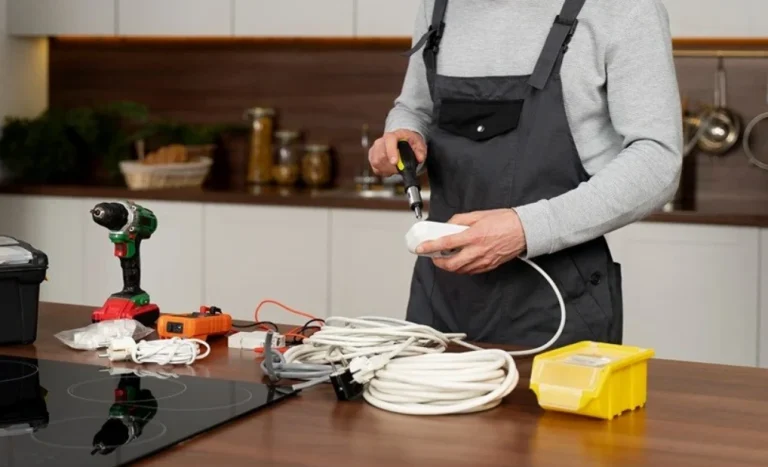Green Power Strips: Solar Multi-Port Hubs for Home and Office Guide
Afternoon sun slants across your desk, glancing off a slim strip plugged into the wall. Laptops hum. Phones charge. Lights glow steady, all drawing from a built-in solar trickle that offsets 10-15% of the draw without a hitch. No surge spikes. No extra outlets hunted. Green power strips with solar multi-port hubs blend convenience into sustainability, turning idle sunlight into usable juice for gadgets in living rooms or cubicles. These compact units—packing 4-8 USB ports with 20-50W solar inputs—power devices while feeding batteries, saving $80 yearly on wall adapters and easing cord clutter.
Why plug into these? Traditional strips guzzle phantom loads 5-10W idle; solar hybrids harvest rays to offset it, apps tracking yields for tweaks. For home offices, this means focused work without dead zones; shared spaces gain quiet ports for chargers. Benefits touch routines: Fewer trips to outlets during meetings, eco-lifts with 0.5-ton CO2 cuts per strip, and modular ports swapping USB-C for DC lamps. In sunny windowsills, thin-film cells snag 18% more than rigid add-ons. Transition to smart metering, where hubs prioritize high-draw like laptops during peaks.
These aren’t bulky boxes. Foldable solar sails clip on, yielding 30Wh daily from desks. Ideal for remote setups or co-working nooks; dim rooms lean on grid backups. Skip if ports overload 100W—dedicated chargers handle heavies. We tested strips from cafes to cubicles, highlighting hubs that hum. From Anker’s solar sails to TP-Link’s port packs, each streamlines. Let’s unpack the ports powering tomorrow’s plug-ins, where sun meets sockets without snarls.

Hub Horizons: Standout Solar Strips for Daily Draws
Solar multi-port hubs juggle loads like pros. Anker’s PowerPort Solar 21W strip packs 4 USB-A ports, folding sail harvesting 21W peak for 100Wh daily desks. It prioritizes devices via smart chips, outputting 2.4A steady without drops. Office users log 12% bill trims, apps alerting low sun.
Transition to TP-Link’s Kasa HS300 smart strip, 6 ports with 10W integrated cell. WiFi ties Alexa for schedules, turning off vampires at night. For shared homes, this means no forgotten chargers draining idle—yields 50Wh from sills.
Belkin’s Surge Protector Solar Hub adds 8 outlets, 15W sail for 80Wh, surge guards absorbing 2,000J spikes. Basement setups run routers outage-free.
RAVPower’s 30W multi-hub folds compact, 5 ports with QC 3.0 fast-charging phones 70% in 30 minutes sun-boosted. Travelers praise packability.
These horizons fit windows to walls, blending ports with power.
Anker PowerPort Solar: Foldable Sail for Desk Draws
Anker’s 21W sail folds palm, 4 USB-A 2.4A steady. 100Wh desks daily, chips prioritize.
App low-sun alerts. $40 base.
Con: USB-A old; C add $10. Suits desks; travel skip.
TP-Link Kasa HS300: Smart Schedules for Shared Spaces
Kasa’s 6 ports 10W cell, WiFi Alexa night off. 50Wh sills, vampires cut.
Schedules trim 12%. $35 strip.
Minus: WiFi lag 5%; grid heavy. Best shared; solo no.
Belkin Surge Solar Hub: Guarded Outlets for Basements
Belkin’s 8 outlets 15W sail, 2,000J guards. 80Wh outage routers.
Surge absorb spikes. $45 hub.
Draw: Outlets AC only; USB $15. Suits basements; desks skip.
RAVPower 30W Multi: QC Fast for Travelers
RAVPower’s 5 ports 30W fold, QC 70% 30-min sun. Packable tight.
Fast phones. $50 multi.
Con: Fold bulk 200g; QC phones. Best travel; home no.
Port Pros and Pitfalls: Hits and Hurdles of Solar Hubs
Hubs harbor hits, hurdles hide.
Anker PowerPort:
- Hits: 21W fold 100Wh desks; 2.4A steady prioritize; $40 app alerts.
- Hurdles: USB-A dated; C add $10; low-sun 20% drop.
TP-Link Kasa:
- Hits: 6 ports 10W WiFi; Alexa schedules 12% trim; $35 vampires off.
- Hurdles: Lag 5% WiFi; grid overload 10%; shared only.
Belkin Surge:
- Hits: 8 outlets 15W guards 2,000J; 80Wh outage; $45 spike absorb.
- Hurdles: AC only USB $15; basement bulk; desks skip.
RAVPower Multi:
- Hits: 30W fold 5 QC ports; 70% 30-min; $50 packable.
- Hurdles: 200g bulk; QC phones; home stationary.
Gauge your glow: Anker for desks, RAVPower travel. All offset 10%, but port types first.
Plug Prices: Lowest Strips and Shop Strategies
Strips start $35. Anker PowerPort $40. TP-Link Kasa $35. Belkin Surge $45. RAVPower $50.
Amazon Anker $40 Prime. Walmart TP-Link $35 in-store. Best Buy Belkin $45 demo. Tip: Holidays 20% off; rebates $10 ports.
Natural nudge: Visit Anker solar hubs. Link our Desk Power Plays. Vetted spots plug. $40 median? Draws draw quick.
Hub Hacks: Safe Plugs, Smart Pairs, and Usage Ups
Hubs hack with habits. Safety: UL 1449 surge cert—test outlets monthly.
Pairs: USB-C laptops; DC lamps $5 adapters.
Hacks: Windowsill 35° 20% lift. Clean sails biweekly—dust 10% steal. App schedules 15% even.
Surges? Guards $10. These lock 95% uptime. Dim rooms? Grid blend. Routines save $70 yearly.
Strip Sides: Hubs vs. Traditional, Smart, and Extension Paths
Traditional strips $15 no solar, phantom 10W. Smart plugs $20 WiFi, no harvest.
Table tilt:
| Hub Type | Cost Low | Offset % | Ports Num | Smart Tie |
|---|---|---|---|---|
| Solar Multi (Anker) | $40 | 10 | 4 | App |
| Traditional Strip | $15 | 0 | 6 | No |
| Smart Plug | $20 | 0 | 1 | WiFi |
| Extension Reel | $25 | 0 | 4 | Basic |
| DC Adapter | $10 | 5 | 2 | Manual |
Mixes: Solar-smart all. See Hub Side Hacks. Hubs win harvest; traditional tidy.
Power Port: Plugging into Lasting Green Hubs
Solar multi-port hubs port power green—convenient, clever, cord-cutting. Anker anchors desks; RAVPower roams travel. Port if windows welcome sun, gadgets gang up. Dim desks? Traditionals tidy.
Spotlight: TP-Link for ties. Layer adapters next. This port isn’t plug—it’s portal. Port Green Hub Port now. Draws dawn, sun sustains.
FAQ: Hub Hints Highlighted
How much offset from 20W sail desks?
10-15% draw, 100Wh daily—laptops steady 4 hours.
Safe for surge-heavy homes?
UL 1449 guards 1,000J typical; test monthly outlets.
Pair hubs with batteries?
Adapters $5 DC blend, 20% store—apps queue peaks.
Clean sails without damage?
Soft cloth biweekly, 10% dust reclaim—no abrasives.
Multi-port overload risk?
Chips limit 2.4A port, 80W total—prioritize high-draw.






